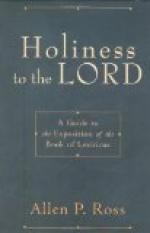Another detail of considerable importance is that of the “finish” or surface of the paper. When paper with a particularly high or glossy surface is desired, it is subjected to a separate process, after leaving the paper machine, known as supercalendering.
“Supercalendering” is effected by passing the web through a stack of rolls which are similar to the machine calenders already described. These rolls are composed of metal cylinders, alternating with rolls made of solidified paper or cotton, turned exactly true, the top and bottom rolls being of metal and heavier than the others; a stack of supercalenders is necessarily composed of an odd number of rolls, as seven, nine, or eleven. The paper passes and repasses through these calenders until the requisite degree of smoothness and polish has been acquired. The friction in this machine produces so much electricity that ground wires are often used to carry it off in order that the paper may not become so highly charged as to attract dust or cause the sheets to cling together. When the fine polish has been imparted, the rolls of paper go to the cutting machines, which are automatic in action, cutting regular sheets of the required length as the paper is fed to them in a continuous web. In the manufacture of some high grades of paper, such as linens and bonds, where an especially fine, smooth surface is required, the sheets after being cut are arranged in piles of from twelve to fifteen sheets, plates of zinc are inserted alternately between them, and they are subjected to powerful hydraulic pressure. This process is termed “plating,” and is, of course, very much more expensive than the process of supercalendering described above.
From the cutters, the sheets are carried to the inspectors, who are seated in a row along an extended board table before two divisions with partitions ten or twelve inches high, affording spaces for the sheets before and after sorting. The work of inspection is performed by women, who detect almost instantly any blemish or imperfection in the finished product as it passes through their hands. If the paper is to be ruled for writing purposes, it is then taken to the ruling machines, where it is passed under revolving discs or pens, set at regular intervals. These convey the ruling ink to the paper as it passes on through the machine, and thus form true and continuous lines. If the paper is to be folded after ruling, as in the case of fine note-papers, the sheets pass on from the ruling machine to the folding machines, which are entirely automatic in their action. The paper is stacked at the back of the first folding guide and is fed in by the action of small rubber rollers which loosen each sheet from the one beneath, and push it forward until it is caught by the folding apparatus. Man’s mechanical ingenuity has given to the machines of his invention something that seems almost like human intelligence, and in the case of the folding machine, the action is so regular and




